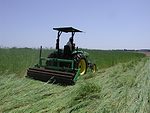Editors' Picks
8 Out of 10 Farmers Use Herbicide to Kill Covers
Herbicides were used by 79% of growers as the preferred termination method, followed by winterkill and roller-crimping.
Read More
Cover Crop Interseeding Increasing Amongst Growers
The practice was up 20 percentage points over the findings of the 2020 Cover Crop Benchmark Study.
Read More





